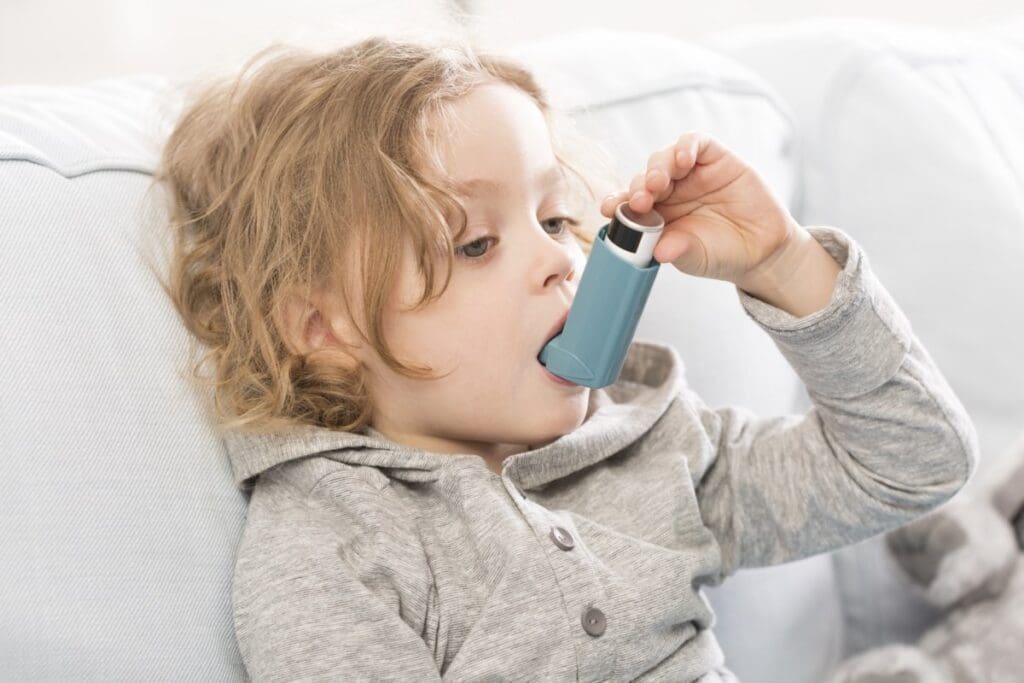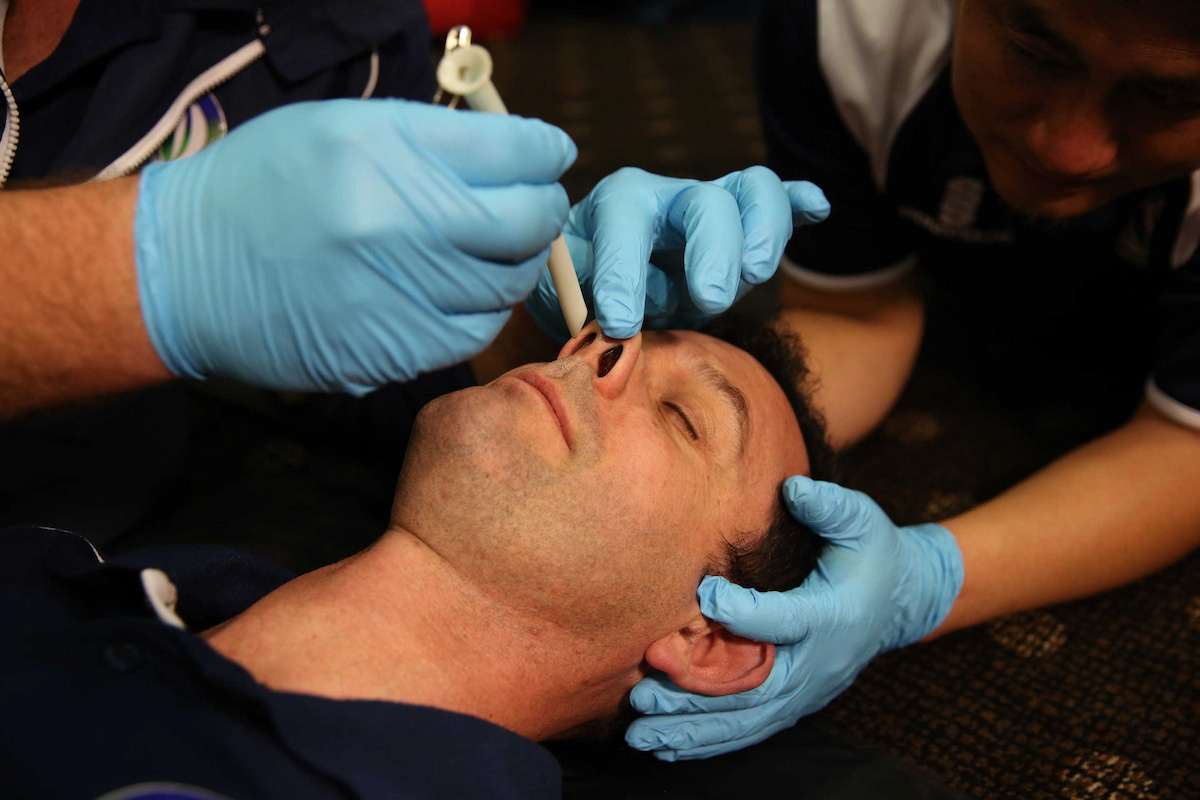Last Updated on November 24, 2025 by
Early obstructive airway disease is a first stage of Chronic Obstructive Pulmonary Disease (COPD). It shows slight airflow problems, often with mild or no symptoms. COPD is a big health problem worldwide, causing many deaths and disabilities.

Most COPD patients are in the early stage, but not many get diagnosed. Knowing the early signs of COPD is key. It helps catch the disease early, which can greatly help patients.
At LivHospital, we focus on spotting these early changes. We aim to stop the disease from getting worse and provide top care to our patients.
“Early obstructive airway disease” is the first stage of COPD. Catching it early can change the disease’s course. It’s key to know what it is, its link to COPD, and why it’s often missed.
Early obstructive airway disease is the start of COPD. COPD is a lung condition that makes it hard to breathe. It includes emphysema and chronic bronchitis. At this early stage, people might not show symptoms or they might be mild.
This makes it hard to spot without a doctor’s check-up. The early stage is not a separate disease but the start of COPD. Knowing this helps in catching it early and slowing COPD’s progress.

More than 70% of COPD patients are in the early stage. This shows how common early obstructive airway disease is. But many cases are missed until it’s too late.
This highlights the need for more awareness and tests. Important facts include:
Knowing these numbers helps doctors focus on early detection. It also teaches patients why catching it early is so important.
It’s important to spot COPD symptoms early. COPD can quietly damage lungs before you notice. Knowing the early signs helps you get help sooner.
COPD symptoms start mild. You might feel shortness of breath when you’re active. Or, you might have a cough that seems like a smoker’s cough.
Early morning chest tightness is a key COPD symptom. You might cough up mucus, which could be clear or yellowish. This symptom gets worse in the morning because of mucus buildup in your lungs.
Women with COPD often feel shortness of breath more than men. They might get diagnosed younger, even if they’ve smoked less. This shows that COPD symptoms can vary by gender.

In Stage 1 COPD, symptoms are mild. They don’t usually stop you from doing daily things. But, as COPD gets worse, symptoms get stronger. Knowing how COPD symptoms Stage1 progression helps manage the disease better.
Spotting these early signs helps you get medical help. This can slow COPD’s progress. Early action is vital for better managing the disease and improving your life.
Early obstructive airway disease is linked to Chronic Obstructive Pulmonary Disease (COPD). It’s caused by several risk factors. Knowing these helps in preventing and managing the disease.
Smoking, genetics, and environmental triggers are key factors. They all play a role in developing early obstructive airway disease.
Smoking is the biggest risk for COPD and early obstructive airway disease. Tobacco smoke harms the lungs and airways. It causes chronic inflammation and obstruction.
Quitting smoking is vital to prevent the disease from getting worse.
Secondhand smoke also poses a risk, mainly in closed spaces. Passive smoking can lead to respiratory symptoms and COPD.
Exposure to pollutants increases the risk of early obstructive airway disease. Air pollution worsens respiratory conditions. Occupational exposures to dust and chemicals also play a role.
Genetics can make some people more prone to early obstructive airway disease. Alpha-1 antitrypsin deficiency is a genetic risk. It affects lung protection, leading to lung damage and COPD, even without smoking.
Age is a significant risk factor. The risk of COPD grows after 40. This is because lung function naturally declines with age.
Older adults are more vulnerable to environmental exposures and other risk factors.
Understanding these risk factors helps in prevention and early intervention. This can reduce the incidence and impact of early obstructive airway disease.
To diagnose COPD early, doctors use a few key methods. These include looking at your medical history, doing lung function tests, and using imaging studies. Knowing about these tools helps manage the disease better.
Getting a detailed medical history is key to spotting COPD. We check your symptoms, smoking history, and exposure to harmful substances. We also look at your family’s lung disease history. This helps us figure out if you might have COPD.
The American Lung Association says a detailed medical history is vital. It helps doctors understand your lung risks and symptoms.
Pulmonary function tests, like spirometry, are very important for COPD diagnosis. They check how well your lungs work and how severe any breathing problems are. Spirometry is a simple test that measures how much air you can breathe out and how fast.
Doctors also use chest X-rays and CT scans to see lung damage. These tests help rule out other diseases. Blood tests might be done to check oxygen levels and how severe the disease is.
Even with these tools, finding COPD early is hard. Many people with early COPD don’t show symptoms or have mild ones. Also, COPD is often mistaken for other lung problems.
Spotting COPD early is very important. It lets doctors start treatment sooner, which can slow the disease’s progress. Knowing the risks and symptoms helps catch it early and treat it right away.
Knowing how to test for COPD is key to early detection and care. COPD is a lung disease that can greatly affect your life if not treated early. We’ll look at self-assessment tools and methods to spot COPD symptoms early.
At-home screening questionnaires are a simple way to check your COPD risk. They ask about your health history, smoking, and breathing issues. For example, the COPD Assessment Test (CAT) measures how COPD affects your life. By answering questions, you get a score showing how severe your symptoms are.
Peak flow meters and home spirometry devices measure lung function. A peak flow meter shows how fast you can exhale. Home spirometry gives more details, like lung volume and capacity. Using these tools regularly can help track lung health and spot COPD signs.
Digital health tools, like mobile apps and online platforms, help monitor COPD symptoms. They track symptoms, medication, and lung function over time. Some apps also give personalized advice and support for managing COPD.
While self-assessment tools are useful, knowing when to see a doctor is vital. Signs like a persistent cough, wheezing, shortness of breath, and frequent infections need medical attention. If you have these symptoms, or if they get worse, see a doctor for a full check-up.
Key Takeaways:
Early detection and treatment of COPD can greatly slow its progress. It also improves the patient’s quality of life. When caught early, COPD can be managed better, leading to a better life for those with it.
Lifestyle changes are key in managing early COPD. Smoking cessation is the most important step for smokers. It directly tackles the main cause of COPD. Also, avoiding pollutants and irritants, like secondhand smoke and chemical fumes, is vital.
We suggest a healthy diet and regular exercise to boost health and lung function. For example, pulmonary rehabilitation programs are very helpful. They include exercise, education, and support to manage symptoms and improve fitness.
Medications are a big part of COPD management. Bronchodilators help open airways, making breathing easier. Inhaled corticosteroids reduce inflammation. For more on COPD treatment, see the NHS guidelines on COPD treatment.
The right medication depends on symptom severity and treatment response. It’s important to work with a healthcare provider to find the best treatment plan.
While COPD is chronic and progressive, early action can slow it down. Lifestyle changes and medication can manage symptoms and improve lung function. But how much it can be reversed varies from person to person.
COPD is not curable, but it can be managed. Effective management includes lifestyle changes, medication, and sometimes pulmonary rehabilitation. Understanding the disease and its management helps patients live active and fulfilling lives despite their diagnosis.
We stress the importance of early detection and treatment in managing COPD. A complete treatment plan can lead to better health outcomes for those with COPD.
COPD is a big problem worldwide. It affects millions, causing a lot of sickness, death, and costs. We need to understand how widespread it is and what the future holds.
COPD is a major killer and cause of sickness globally. The Global Burden of Disease Study says over 65 million people have it. This number is likely to grow as more people get older and face risks like smoking and pollution.
Key statistics highlighting the global prevalence of COPD include:
COPD attacks can lead to hospital stays and deaths. People with COPD are more likely to have serious attacks. These attacks can be deadly and cost a lot in health care.
The risks associated with COPD hospitalization and mortality include:
COPD costs a lot, both in health care and lost work time. Catching it early and treating it can save money. It can also prevent the need for expensive hospital stays.
“Early detection and management of COPD can reduce healthcare costs and improve patient outcomes.”
— A Famous Lung Association
Acting early in COPD can make a big difference. Quitting smoking, using medicine, and rehab can slow the disease. This improves life quality and lowers the chance of attacks.
The benefits of early intervention include:
Early detection is key in managing Chronic Obstructive Pulmonary Disease (COPD). It lets healthcare providers start treatments early. This can greatly improve how well a patient does.
Spotting COPD early means people can make lifestyle changes and get treatments sooner. This can slow down the disease and make life better. We aim to give top-notch care and support to those with COPD.
Early action can also save money and lead to better health in the long run. We urge people to know the signs of COPD and see a doctor if they have trouble breathing.
Early signs of COPD include shortness of breath and a cough. You might also feel tightness in your chest in the morning. Spotting these signs early is key to getting help.
Doctors use many tests to find COPD early. They look at your medical history and do lung function tests. They might also use imaging and other tests to confirm the diagnosis.
Yes, you can use home tests for COPD. These include questionnaires and devices like peak flow meters. They can show if you might have symptoms and need to see a doctor.
Several things can increase your risk of COPD. These include smoking, being exposed to pollution, and having a family history. Age also plays a role. Knowing these risks can help you take steps to prevent COPD.
COPD can’t be completely cured, but early treatment can slow it down. In the early stages, making lifestyle changes and taking medication can help manage symptoms. This might even reverse some damage.
Women with COPD often have the same symptoms as men, like breathing problems and coughing. But women might have different symptoms too. Doctors need to consider these differences when treating COPD.
To manage COPD symptoms, quit smoking and exercise regularly. Avoid things that can trigger your symptoms. You can also take medication like bronchodilators and inhaled corticosteroids.
COPD is a big health problem worldwide, affecting millions. Knowing how common it is can help raise awareness. This can lead to more people getting checked and treated early.
Getting treatment early can greatly improve your outlook with COPD. It can slow the disease, reduce the need for hospital stays, and lower the risk of death. It also makes life better overall.
Subscribe to our e-newsletter to stay informed about the latest innovations in the world of health and exclusive offers!